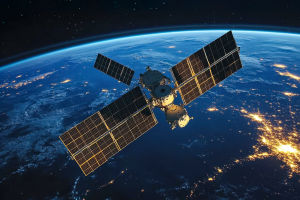The night sky is dotted with countless planets and moons, each an extraordinary world in its own right. But where do these celestial bodies come from?
How do tiny particles in a vast cosmic cloud eventually come together to create massive planets and their satellites?
The formation of planets and moons is a story that dates back billions of years, woven into the broader tale of our solar system's birth and evolution. Join me as we explore this captivating journey from dust and gas to planetary systems capable of supporting life or cosmic wonders.
The Birthplace: Protoplanetary Disks
Planet and satellite formation begins within protoplanetary disks—rotating disks of gas and dust surrounding newly formed stars. These disks, glowing faintly in infrared light, contain the raw materials for future worlds. Over time, dust particles collide and stick together, gradually building larger bodies called planetesimals. These planetesimals serve as the foundational building blocks of planets. The disk's composition, temperature, and dynamics determine what types of planets will emerge, whether rocky terrestrial planets near the star or gas giants farther out.
From Dust to Planetesimals
Tiny dust grains, often smaller than a grain of sand, begin to collide in the protoplanetary disk. Electrostatic forces and gentle collisions allow these particles to clump, forming millimeter- to centimeter-sized aggregates. As these aggregates accumulate, gravity strengthens, enabling them to attract more material and grow into kilometer-scale planetesimals. This stage is critical, as overcoming disruptive forces like turbulence and gas drag is necessary for stable growth. Recent research using advanced telescopes and simulations highlights how complex and delicate this phase is.
Planet Formation: Accretion and Differentiation
Once planetesimals form, their gravity pulls in surrounding material, leading to accretion—the gradual growth of planetary embryos. Through continuous collisions and mergers, these embryos increase in size, eventually forming protoplanets. Inside these growing bodies, differentiation occurs: heavier materials like metals sink toward the core, while lighter silicates form outer layers. In the inner disk region, high temperatures favor the formation of rocky planets, while beyond the “snow line,” where temperatures are low enough for volatile compounds to freeze, gas giants and icy bodies are common.
Satellite Formation: Moons Around Planets
Moons, or natural satellites, form through various processes linked to planet formation. Many large moons likely emerged from disks of debris orbiting young planets, similar to a miniature protoplanetary disk, accumulating material to form satellites. Others may have formed from direct capture of passing objects by a planet's gravity or as a result of massive impacts, such as Earth's moon believed to have formed after a collision with a Mars-sized body. The mechanisms vary, but all reflect the dynamic, sometimes violent environment of early planetary systems.
Timelines and Influencing Factors
The formation of a full planetary system takes millions to tens of millions of years—a blink on cosmic scales but a lengthy process for solid bodies. Factors like the protoplanetary disk's mass, composition, and lifespan, and the central star's radiation shape the outcome. Observations of young stellar systems in various stages reveal ice lines, gaps, and asymmetries hinting at ongoing planet formation. Understanding these systems gives clues about our own solar system's earliest epochs.
Modern Research and Exploration
Telescopes like ALMA (Atacama Large Millimeter/submillimeter Array) and missions such as NASA's OSIRIS-REx provide valuable data on dust distribution and asteroid composition, bridging observation with theory. Computer simulations help test hypotheses on planetesimal formation and orbital dynamics. Research into exoplanets also informs us about the diversity of planetary systems, indicating that planet and satellite formation is a common and varied process throughout the universe.
Engaging Our Cosmic Origins
From the humble dust grains circling nascent stars to majestic planets with moons, the formation processes reveal the universe's extraordinary creativity and complexity. How do you imagine the vast differences in planetary systems affect prospects for life elsewhere? What fascinations or questions do you have about the early stages of our own solar system? Sharing thoughts and curiosity about these cosmic origins connects us with the broader quest of scientific discovery.
The story of planets and satellites reminds us that from simple beginnings, complex worlds—and perhaps life itself—can emerge. This knowledge enriches our understanding not only of space but of our place within this magnificent cosmos.


